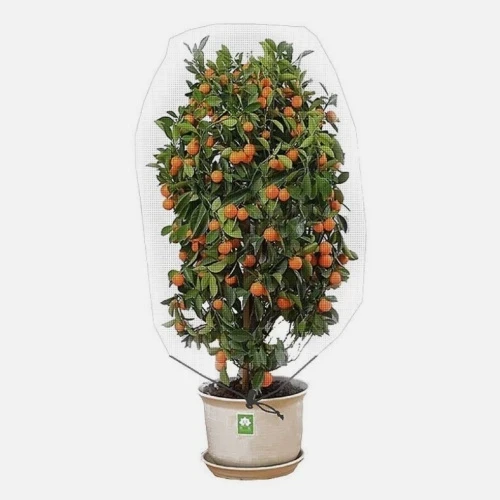-
 Afrikaans
Afrikaans -
 Albanian
Albanian -
 Amharic
Amharic -
 Arabic
Arabic -
 Armenian
Armenian -
 Azerbaijani
Azerbaijani -
 Basque
Basque -
 Belarusian
Belarusian -
 Bengali
Bengali -
 Bosnian
Bosnian -
 Bulgarian
Bulgarian -
 Catalan
Catalan -
 Cebuano
Cebuano -
 China
China -
 Corsican
Corsican -
 Croatian
Croatian -
 Czech
Czech -
 Danish
Danish -
 Dutch
Dutch -
 English
English -
 Esperanto
Esperanto -
 Estonian
Estonian -
 Finnish
Finnish -
 French
French -
 Frisian
Frisian -
 Galician
Galician -
 Georgian
Georgian -
 German
German -
 Greek
Greek -
 Gujarati
Gujarati -
 Haitian Creole
Haitian Creole -
 hausa
hausa -
 hawaiian
hawaiian -
 Hebrew
Hebrew -
 Hindi
Hindi -
 Miao
Miao -
 Hungarian
Hungarian -
 Icelandic
Icelandic -
 igbo
igbo -
 Indonesian
Indonesian -
 irish
irish -
 Italian
Italian -
 Japanese
Japanese -
 Javanese
Javanese -
 Kannada
Kannada -
 kazakh
kazakh -
 Khmer
Khmer -
 Rwandese
Rwandese -
 Korean
Korean -
 Kurdish
Kurdish -
 Kyrgyz
Kyrgyz -
 Lao
Lao -
 Latin
Latin -
 Latvian
Latvian -
 Lithuanian
Lithuanian -
 Luxembourgish
Luxembourgish -
 Macedonian
Macedonian -
 Malgashi
Malgashi -
 Malay
Malay -
 Malayalam
Malayalam -
 Maltese
Maltese -
 Maori
Maori -
 Marathi
Marathi -
 Mongolian
Mongolian -
 Myanmar
Myanmar -
 Nepali
Nepali -
 Norwegian
Norwegian -
 Norwegian
Norwegian -
 Occitan
Occitan -
 Pashto
Pashto -
 Persian
Persian -
 Polish
Polish -
 Portuguese
Portuguese -
 Punjabi
Punjabi -
 Romanian
Romanian -
 Russian
Russian -
 Samoan
Samoan -
 Scottish Gaelic
Scottish Gaelic -
 Serbian
Serbian -
 Sesotho
Sesotho -
 Shona
Shona -
 Sindhi
Sindhi -
 Sinhala
Sinhala -
 Slovak
Slovak -
 Slovenian
Slovenian -
 Somali
Somali -
 Spanish
Spanish -
 Sundanese
Sundanese -
 Swahili
Swahili -
 Swedish
Swedish -
 Tagalog
Tagalog -
 Tajik
Tajik -
 Tamil
Tamil -
 Tatar
Tatar -
 Telugu
Telugu -
 Thai
Thai -
 Turkish
Turkish -
 Turkmen
Turkmen -
 Ukrainian
Ukrainian -
 Urdu
Urdu -
 Uighur
Uighur -
 Uzbek
Uzbek -
 Vietnamese
Vietnamese -
 Welsh
Welsh -
 Bantu
Bantu -
 Yiddish
Yiddish -
 Yoruba
Yoruba -
 Zulu
Zulu
Choosing the Right Bolting Cloth for Effective Screen Printing
Understanding Bolting Cloth for Screen Printing
Bolting cloth, often referred to as mesh or screen printing fabric, is a crucial component in the screen printing process. This specialized fabric serves as the medium through which ink is transferred onto various substrates, including fabric, paper, and other materials. Understanding the different aspects of bolting cloth can significantly enhance the quality of screen printing results, making it essential for both hobbyists and professionals.
What is Bolting Cloth?
Bolting cloth is a type of woven fabric typically made from synthetic fibers such as polyester or nylon. It is characterized by its fine mesh structure, which allows for precise control over the ink flow during the printing process. The mesh count, which refers to the number of threads per inch in the fabric, varies widely and affects the outcome of the printed design. Higher mesh counts yield finer details, while lower counts allow for thicker layers of ink.
Mesh Count
Choosing the right mesh count is vital depending on the type of project. For detailed artwork or photography, a higher mesh count (around 230 to 305 threads per inch) is recommended to capture intricate designs. Conversely, for bold graphics with a heavy ink deposit, a lower mesh count (around 110 to 160 threads per inch) can be utilized to ensure good coverage. Understanding this relationship allows screen printers to tailor their choices to the specific needs of their projects, improving both efficiency and effectiveness.
Tension and Durability
bolting cloth for screen printing

The tension of the bolting cloth also plays an important role in the printing process. Properly tensioned screens prevent ink bleeding and ensure sharp edges in the final print. Tools such as screen stretching devices are commonly used to achieve the ideal tension, which can vary based on the mesh count and frame being used. Durability is another essential factor; bolting cloth manufactured from high-quality materials will withstand the rigors of the printing process, including repeated exposure to ink and solvents.
Coating and Emulsion
Before printing, bolting cloth typically receives a coating of emulsion, a light-sensitive substance that hardens upon exposure to UV light. This process forms a stencil on the screen, allowing certain areas to be blocked out while others remain open for ink transfer. The choice of emulsion should complement the ink being used, as compatibility affects the sharpness and vibrancy of the printed design.
Care and Maintenance
Maintaining bolting cloth is crucial for prolonging its lifespan and ensuring consistent print quality. After use, screens should be cleaned with appropriate solvents to remove ink and emulsion residue. Storing screens flat and away from direct sunlight will help prevent damage and maintain the integrity of the bolting cloth.
Conclusion
Bolting cloth is an indispensable element of screen printing that significantly influences the quality and precision of the final product. By understanding the intricacies of mesh count, tension, coating, and maintenance, printers can make informed decisions that enhance their work. Whether you're a seasoned professional or a newcomer to the world of screen printing, investing time in learning about bolting cloth can yield rewarding results and elevate your designs to new heights. With the right knowledge and practices, screen printing can transform into a powerful medium for expression and creativity.
-
Shipping Plastic Bags for Every NeedNewsJul.24,2025
-
Safety Netting: Your Shield in ConstructionNewsJul.24,2025
-
Plastic Mesh Netting for Everyday UseNewsJul.24,2025
-
Nylon Netting for Every UseNewsJul.24,2025
-
Mesh Breeder Box for Fish TanksNewsJul.24,2025
-
Expanded Steel Mesh Offers Durable VersatilityNewsJul.24,2025











